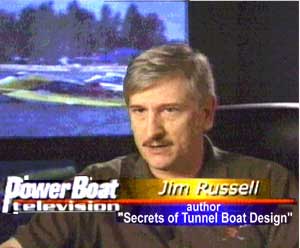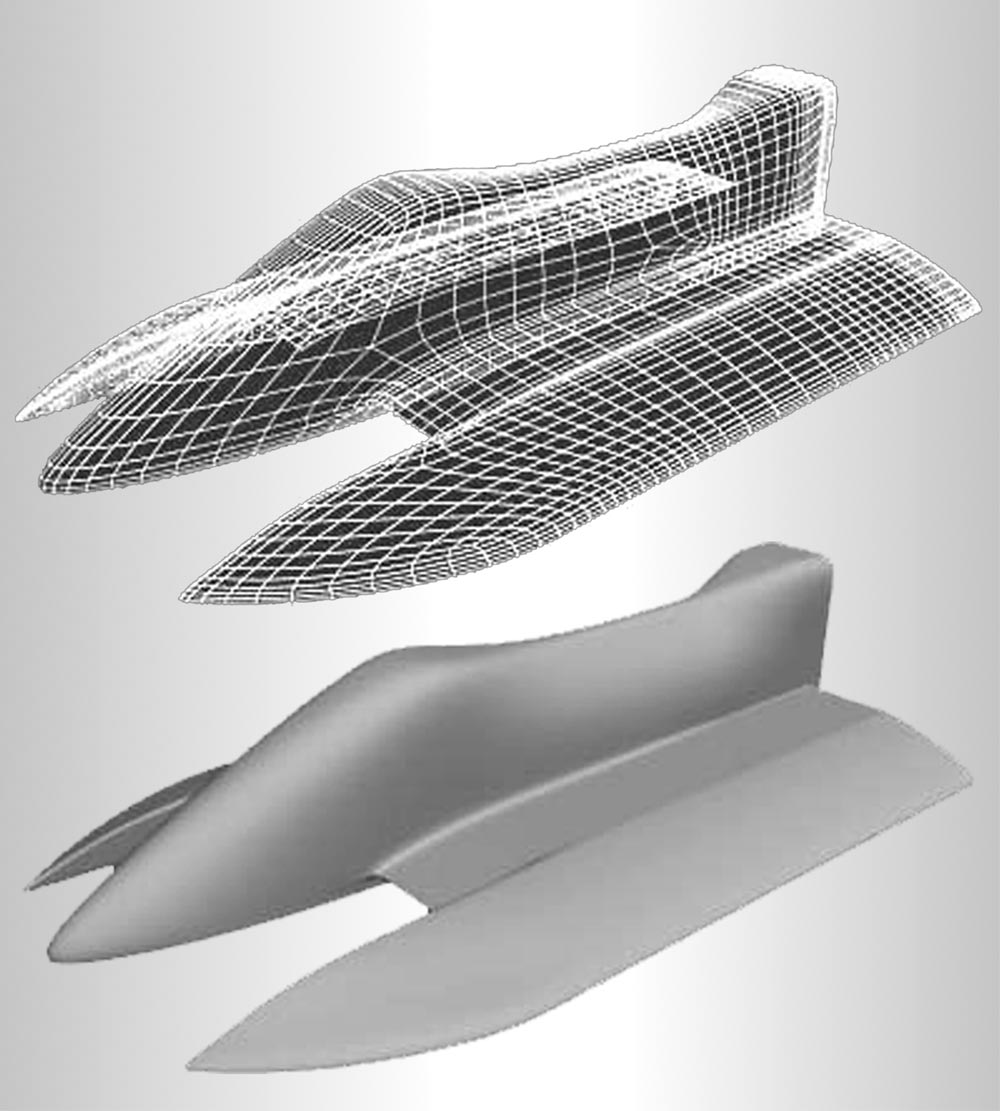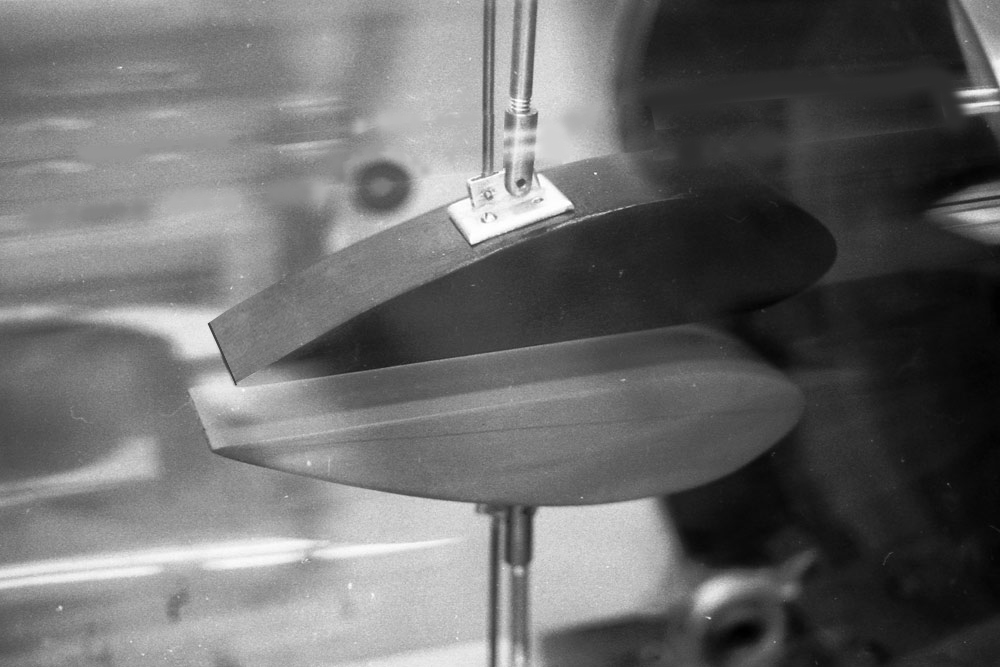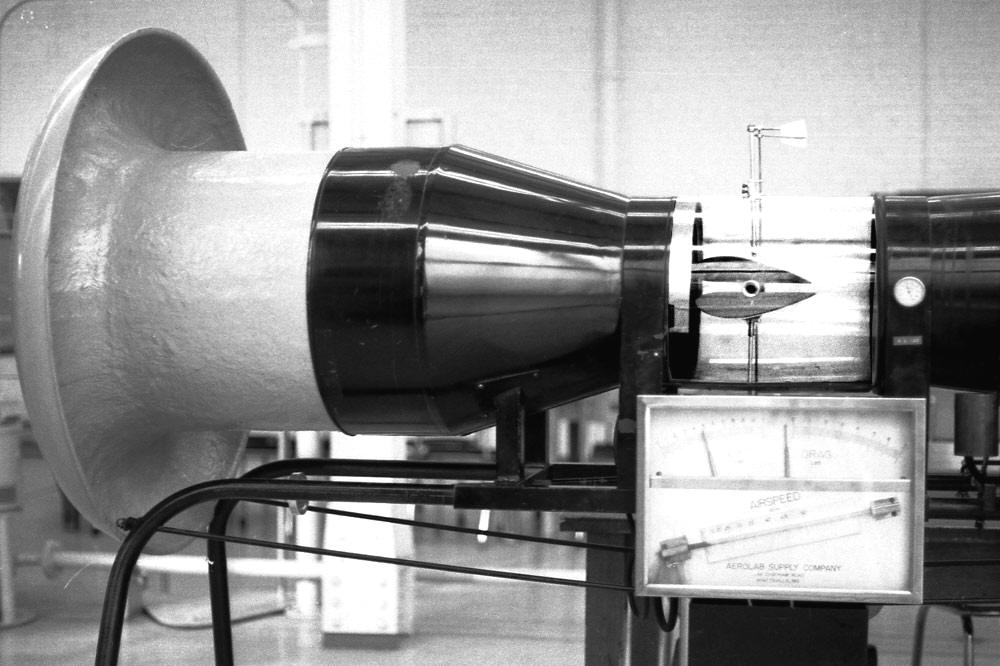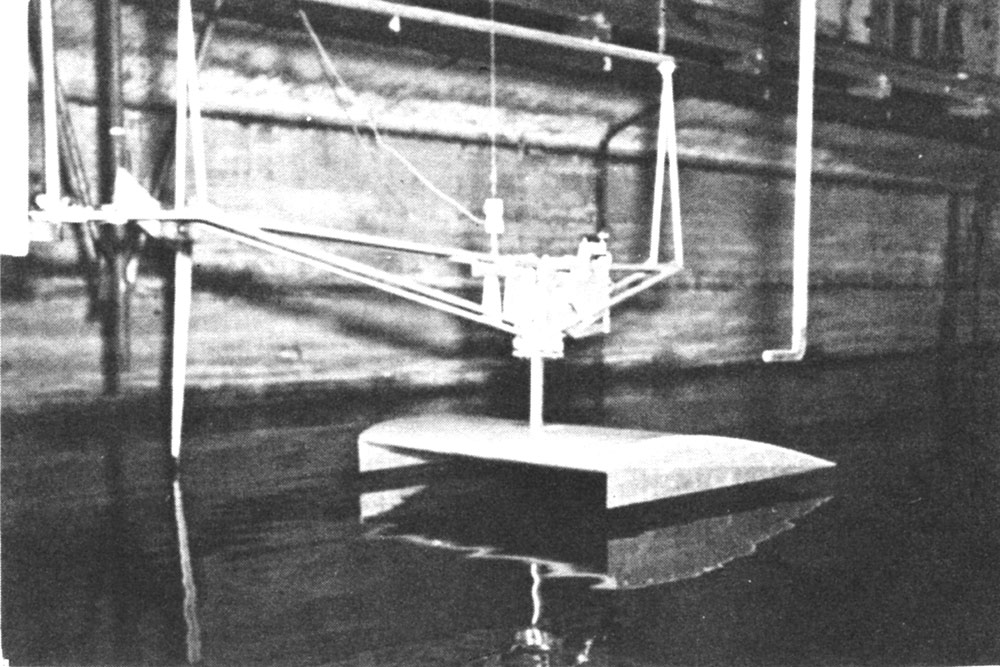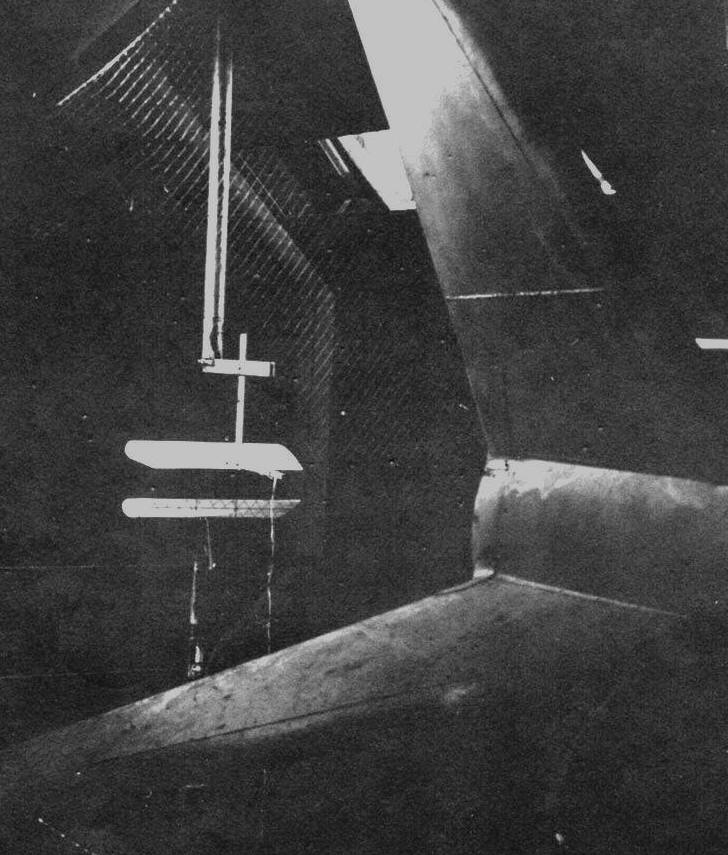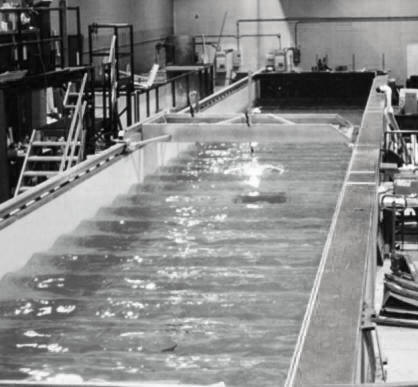Ground-effect tests were conducted in a high-speed, sub-sonic, wind tunnel using an
'image-wing' and alternative 'ground-board' methods of testing.
The image-wing technique involves the use of an identical model mounted inverted with respect to the test model.
This additional wing model is, in effect, an image or reflection of the test with the distance between the two wings being equal to 2 X ground height represented. Tests made with the image-wing method have shown to correlate well with results of tests of a model moving over a still surface.
An investigation was performed to predict the performance of close-proximity ground-effect wing models at forward speeds using a surface tank test facility.
This testing was made with the model moving over the water in order to eliminate the effects of wind-tunnel walls and boundary layer of ground boards that sometimes is reported at small ground clearances. For these tests the airfoils were attached to the towing apparatus by a streamlined strut, and Lift, drag and pitching moment recorded.
Water Channel towing-tank experiments are conducted to test and prove complex planing surface performance and wave-acting performance at high velocities (Froude number).
Testing included wing models with and without end plates, and represented the full range of practical dimensions used in of full scale tunnel hull & power
catamaran hull designs - aspect ratio, height above surface, aerofoil length, width, operating angle of attack, and representative velocity range (Reynolds numbers).
Results of extensive testing was correlated with full scale tunnel hull (catamaran) tests that compared real-model characteristics of representative aspect ratio, height above surface and angle of attack with aerodynamic lift, drag and instability, at similar velocities (100ft/sec).
Hydrodynamic planing research has been
advanced by AR®, powerfully extending Savitsky/Brown algorithms to apply for the complexities of
mixed lifting forces. Aeromarine Research® has developed unique
algorithms to produce highly accurate aerodynamic & hydrodynamic lift,
drag and dynamic stability results that are specific to tunnel hull, power catamaran, vee hull and vee-pad hulls.
Complex fluid flow modeling specifically for tunnel and vee hulls allows accurate computer modeling of these complex designs that fly in air on water.
Jim Russell is recognized for his advanced research and consulting on powerboat design, performance analysis, safety analysis, accident investigation & analysis. He also lectures on engineering hydrodynamics, aerodynamics and powerboat design. He has consulted
for leading performance powerboat builders, manufacturers, designers and military, serving performance recreation applications, racing hulls, and utility/fishing hulls, in literally all parts of the globe.

